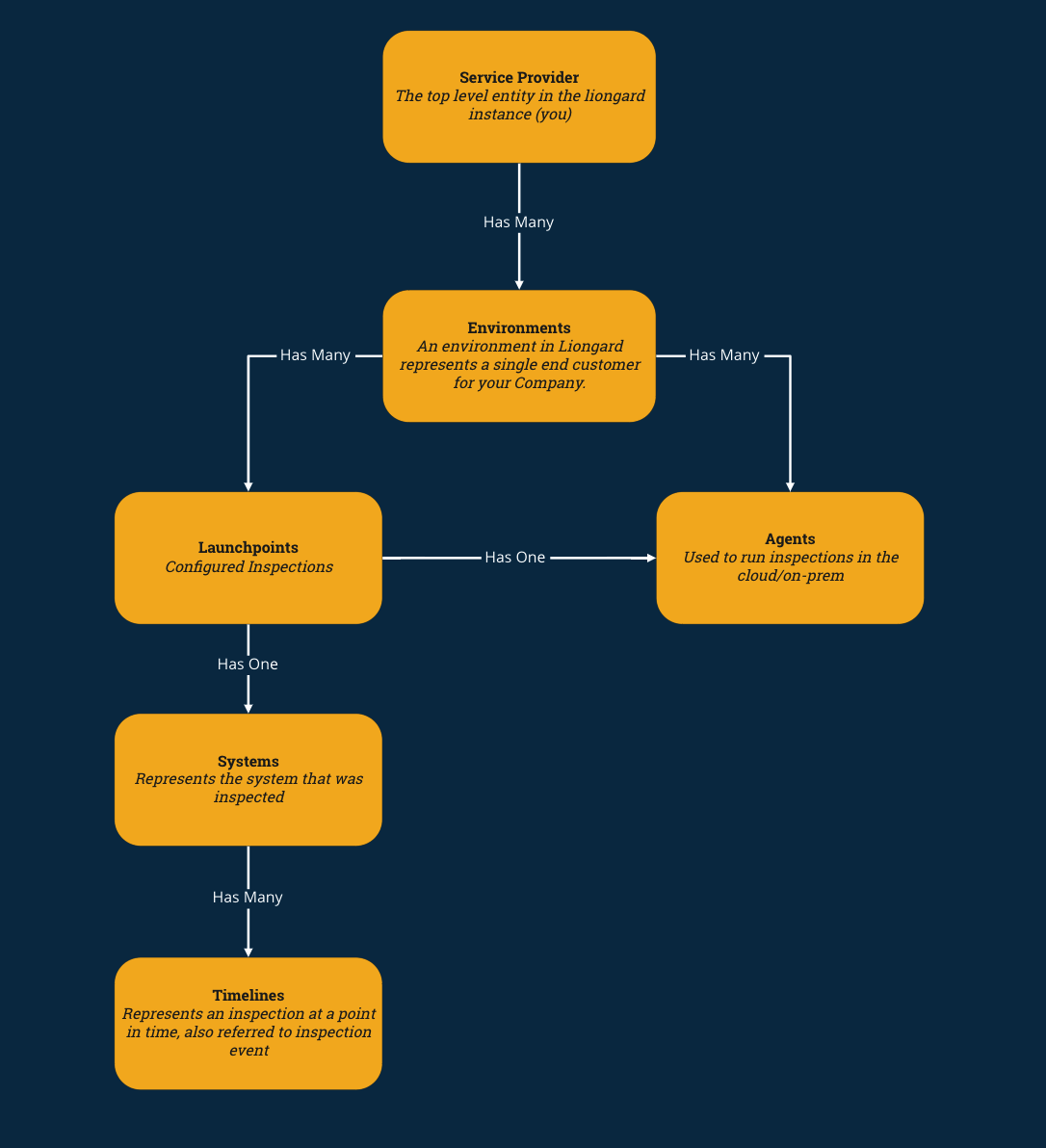Liongard is an API-first product, meaning ALL functionality of the Liongard platform is exposed via our REST API.
Currently, we are working toward a v2 of our API which will be more consistent and easy to use. Until then, we have published documentation on the most common v1 routes that our partners integrate with to get you started working with the API.
Accessing the APIIn order to access our API, you will need a Liongard Account. If you are interested in building an integration without the product and need an account feel free to reach out to our team here and tell us a bit about your company and integration interests!
Working with the Liongard API
- Get familiar with Liongard Terminology
- Learn how to authenticate to the Liongard API
- Work with the Liongard API
- Best Practices when working with Metrics
- Download and try out our endpoints via our Postman Collection
Liongard Terminology and Data Model
Below you will find common terminology you will encounter when working with Liongard as well as how our data flows within the API.
Terminology
- Environments: An Environment in Liongard represents a single end customer for your company. An Environment will contain Agents, Inspectors/Launchpoints (configured inspections), and Systems (data that has landed as a result of an inspection).
- Agents: Agents can be installed in the Cloud or On-Premises and are responsible for running inspections.
- Inspectors: An Inspector represents a system type and is used for building the config templates for launchpoints.
- Launchpoint: A Launchpoint is a configured Inspection. As an example, if you set up a Domain Inspector to run on "liongard.com", it would be considered a Launchpoint.
- System: A System in Liongard represents a system that has been inspected by a Launchpoint. When the inspection completes for the first time, a system is completed, and a corresponding timeline entry is created each time the inspection lands.
- Timeline: A Timeline entry represents a single inspection event. It links a System to its configuration at that point in time.
- Change Detection: A Change Detection highlights a detected change on a system.
- Actionable Alerts: An Actionable Alert is triggered when an Actionable Aler's rule's conditions are met by an inspection.
- Metrics: Metrics are queries written to extract a piece of information from a system to create an Actionable Alert rule, Change Detection, and/or to be used in a report.
Data Model
Below we have included a simplified diagram explaining the basic data model of Liongard so you can start familiarizing yourself with the terms you will see in the API.

Next
